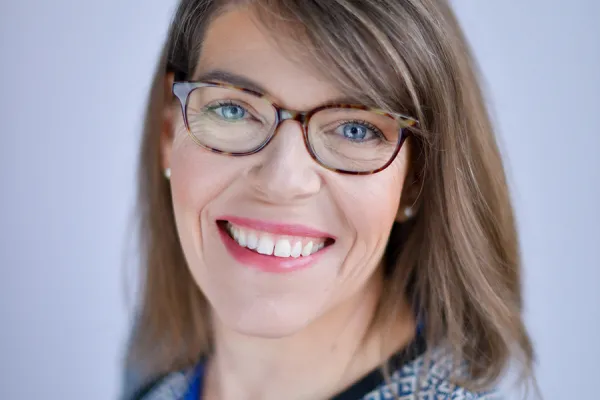Messages for Success: Smith Professor Shares Strategies for Boosting Diversity in STEM
Campus Life

Published February 10, 2015
Drawing more women and other underrepresented groups to STEM fields means changing not only classroom methods, but also messages from educators about what leads to success.
That was the theme sounded by Patricia DiBartolo, professor of psychology and faculty director of the sciences at Smith, at a forum last week for members of the Pioneer Valley STEM Network.
“The idea that you have to be unusually brilliant to be in science can be a barrier” for women, African Americans and others still scarce in STEM, DiBartolo said—especially given societal stereotypes that posit those groups do not excel in science.
A better message, one that’s proved to be effective with students focuses on process, she added. “The message needs to be that we are looking for people with potential and persistence.”
DiBartolo was the featured speaker at a talk hosted by the STEM network on “Building Diversity” in science, technology, engineering and math. Last week’s gathering at the UMass Springfield Center drew an audience of more than two dozen K-12 and college educators, regional employment counselors and nonprofit leaders.
Over the past decade, “principles and practices have emerged at Smith that have been really successful at building diversity in STEM,” DiBartolo said.
The message needs to be about inclusive excellence: We have high standards—and we can see that you can get there.
She noted that 40 percent of all students at the college have at least one science major—more than two times the national average. And in STEM disciplines where women are most underrepresented nationally, the proportion of Smith majors is three times the national average.
To encourage more participation in STEM, DiBartolo said Smith has increasingly emphasized hands-on, “active learning” in science classes, as opposed to traditional large lectures and labs.
“These active learning strategies have been found to help pull in more students and make them more successful,” DiBartolo said, citing a national study that showed students earned better grades in classes where they were engaged in hands-on learning.
Smith also has an extensive peer mentoring program for students in STEM, as well as increased research opportunities through the Achieving Excellence in Mathematics, Engineering and Sciences Scholarship Program, DiBartolo said.
In addition, Smith science faculty—half of whom are women—serve as role models, offering students positive messages about what it takes to thrive in STEM, DiBartolo said.
“We spend a lot of time talking about how we can create more welcoming classrooms. And we spend a lot of time talking to our students about what gets in the way of their success,” she noted. “The message needs to be about inclusive excellence: We have high standards—and we can see that you can get there.”
After her talk, DiBartolo fielded questions from the audience about how technology can promote active learning in STEM and how such strategies can be adapted for K-12 classrooms.
“A lot of those lessons can be translated,” she said.
Later, in small group discussions, network members explored how educators can work to change negative perceptions that students may have about STEM studies and careers.
“One way is to be more transparent about your own work in the classroom and as scientists,” DiBartolo told her small group. “You can model persistence by telling your students, ‘My experiments fail all the time.’”
Jan deUbl, a science teacher at White Brook Middle School in Easthampton, said she came to the forum “to hear from the experts about ways to reach more students in these classes.”
Network member Marla Solomon said she appreciated the way DiBartolo framed the challenge of increasing diversity in STEM.
“Thinking about pedagogy and the messages it conveys was very useful,” said Solomon who directs the Five College Partnership Programs. “This talk raised a lot of questions and stimulated a lot of conversation.”